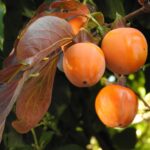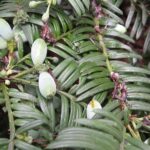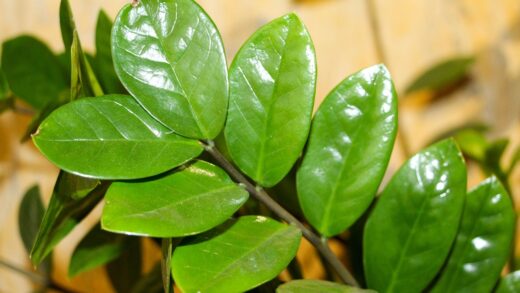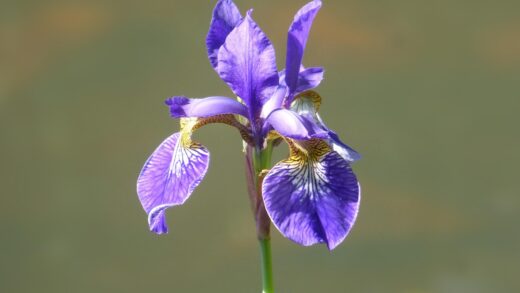The gerbera, a cheerful cut flower and potted plant originating from South Africa, dazzling in its vibrant colours, is one of today’s most beloved ornamental plants. However, for it to shine in its full beauty and reward us with abundant flowering, a precise understanding of its nutrient requirements and expert, balanced fertilization are essential. Inadequate nutrient supply can not only hinder growth and flower formation but also weaken the plant’s overall health, making it more susceptible to diseases and pests. That is why it is crucial to understand what elements this wonderful plant needs and in what proportions during its various developmental stages.
The essential nutrients for plants can be divided into two main groups: macronutrients and micronutrients. Macronutrients are those that gerberas require in larger quantities; these include nitrogen (N), phosphorus (P), and potassium (K), as well as secondary macronutrients such as calcium (Ca), magnesium (Mg), and sulfur (S). Nitrogen is primarily responsible for the growth of green mass, leaves, and shoots; phosphorus is essential for root formation, flower and seed development; while potassium influences general vigour, disease resistance, and flower quality. A deficiency in any of these elements can cause characteristic symptoms and significantly set back the plant’s development.
Micronutrients, although needed only in small quantities, are just as vital for the healthy life functions of gerberas. These include, among others, iron (Fe), manganese (Mn), boron (B), zinc (Zn), copper (Cu), and molybdenum (Mo). These elements play a key role in the function of various enzymes, in chlorophyll formation, and in other metabolic processes. Their deficiency can trigger specific symptoms, such as yellowing leaves, deformed growth, or a lack of flowering, even if macronutrients are available in optimal amounts.
Nutrient uptake is influenced by numerous factors that must also be considered for successful gerbera cultivation. Such a factor, for example, is the chemical reaction (pH value) of the growing medium, which determines the solubility and availability of individual nutrients. The temperature of the medium, moisture content, structure, and light intensity are also important, as all these affect root activity and plant metabolism. A well-chosen growing medium and the provision of optimal environmental conditions are therefore basic prerequisites for effective nutrient utilization.
Essential Nutrient Requirements of Gerbera
Nitrogen (N) is of outstanding importance for the vegetative development of gerberas, as it is a fundamental building block of proteins, nucleic acids, and chlorophyll. Adequate nitrogen supply ensures vigorous leaf and shoot growth, as well as the development of the plant’s overall size. In case of its deficiency, the leaves, especially older ones, turn pale green or yellowish, growth slows down, and the plant remains stunted. Conversely, an excessive amount can result in overly lush, loose-tissued, dark green foliage, which can delay flowering and increase susceptibility to diseases and pests.
More articles on this topic
Phosphorus (P) is essential for gerberas, particularly for root system development, flower initiation, and the formation of flowers and seeds. It plays a significant role in energy metabolism (ATP formation) and the regulation of numerous physiological processes. In the event of phosphorus deficiency, the root system develops poorly, leaves turn dark green, sometimes with a purplish hue, and flowering may be sparse or even completely absent. An excessive amount of phosphorus rarely causes direct problems but can hinder the uptake of some micronutrients, such as iron and zinc.
Potassium (K) is also a key macronutrient for gerberas, involved in the activation of more than sixty enzymes, regulating water uptake and release (through stomatal function), and promoting carbohydrate transport within the plant. It enhances the plant’s stress tolerance, whether to drought, cold, or disease resistance, and improves flower quality, colour intensity, and vase life. In the case of potassium deficiency, the margins of older leaves begin to yellow, then turn brown and necrotic, stems weaken, and flower quality deteriorates.
Among the secondary macronutrients, calcium (Ca) and magnesium (Mg) deserve special attention in gerbera nutrition. Calcium plays a fundamental role in cell membrane stability, cell wall structure formation, and cell division. Its deficiency can lead to distortion and death of young leaves and shoot tips, and although blossom-end rot is not typical for gerberas, calcium deficiency generally weakens plant tissues. Magnesium is the central atom of the chlorophyll molecule, thus essential for photosynthesis, and it also participates in the activation of numerous enzymes. In case of magnesium deficiency, a characteristic symptom is interveinal chlorosis on older leaves, where the veins remain green, but the leaf tissue between the veins turns yellow.
The Role of Micronutrients and Their Deficiency Symptoms
Iron (Fe) is one of the most important micronutrients for gerberas, as it is essential for chlorophyll synthesis and the function of numerous respiratory and photosynthetic enzymes. Since it is poorly mobile in the plant, its deficiency always first appears on the youngest leaves in the form of interveinal chlorosis: the leaf veins remain green, while the tissues between the veins turn yellow, and in severe cases, almost white. Iron uptake is greatly influenced by the pH value of the medium; at high pH (alkaline medium), iron becomes insoluble and unavailable to the plant, even if it is otherwise present in sufficient quantity in the soil or nutrient solution.
More articles on this topic
Manganese (Mn) is also crucial in the process of photosynthesis, participating in oxygen evolution, as well as an activator of numerous enzymes and in nitrogen assimilation. Symptoms of manganese deficiency can resemble those of iron deficiency, i.e., interveinal chlorosis occurs, but this is often observed on younger or middle leaves, and small necrotic spots may also appear on the yellowing parts, which can give the leaf a reticulated, mottled appearance. Manganese availability is also strongly influenced by pH; it decreases in alkaline media, while in strongly acidic media, excessive uptake can cause toxicity.
Boron (B) and zinc (Zn) are also essential micronutrients. Boron plays a role in carbohydrate transport, cell wall formation and integrity, cell division, hormone balance, as well as flower fertilization and pollen viability. In the case of boron deficiency, the youngest shoot parts and buds may die, leaves can become deformed and brittle, and flower formation and fruit set can also be significantly reduced. Zinc is a component of numerous enzyme systems, playing an important role in the synthesis of the plant growth hormone auxin and in carbohydrate metabolism. In the case of zinc deficiency, growth slows down, internodes shorten (“rosetting”), leaves remain small, and interveinal chlorosis is often observed on them.
Last but not least, copper (Cu) and molybdenum (Mo) also play important roles in the life processes of gerberas, although they are needed in even smaller quantities. Copper is a component of enzymes involved in numerous oxidation-reduction processes, playing a role in photosynthesis and respiration. Copper deficiency rarely occurs, but if it does, young leaves turn dark bluish-green, may twist, and dieback of shoot tips can also occur. Molybdenum is primarily needed for the functioning of the nitrate reductase enzyme, which plays a role in converting absorbed nitrate nitrogen into a usable form. In the case of molybdenum deficiency, symptoms often resemble nitrogen deficiency, for example, yellowing of older leaves, as the plant cannot properly utilize the absorbed nitrate.
The Influence of Growing Media and pH Value on Nutrient Uptake
One of the fundamental prerequisites for successful gerbera cultivation is the selection of an appropriate growing medium. Generally, it prefers loose-structured media with good water management and aeration, such as peat-based substrates, coir, or their mixtures supplemented with perlite and vermiculite. These media provide the necessary oxygen for the roots while being able to retain an adequate amount of moisture and nutrients. In addition to the physical properties of the medium, chemical characteristics, such as nutrient content and pH value, fundamentally influence the availability and utilization of nutrients.
The chemical reaction of the growing medium, i.e., its pH value, is a critical factor for nutrient uptake in gerberas. The pH scale indicates how acidic or alkaline a medium is; a value of 7 is neutral, lower values indicate an acidic reaction, and higher values an alkaline reaction. The solubility of most nutrients, and thus their availability to plants, is pH-dependent. For gerberas, a slightly acidic medium, typically in the pH range of 5.5 to 6.2, is considered optimal, as in this range, most macro- and micronutrients become most readily available to the plant.
If the pH value of the growing medium deviates from the optimum, serious nutrient uptake disorders can occur. At too low a pH (strongly acidic medium), for example, the solubility of some micronutrients, such as iron, manganese, or aluminum, can increase, which can lead to toxic uptake, while the uptake of macronutrients, such as calcium and magnesium, may decrease. Conversely, at too high a pH (alkaline medium), the solubility of iron, manganese, boron, and zinc drastically decreases, which can induce deficiency symptoms of these elements, even if they are otherwise present in sufficient quantity in the medium.
Regular checking of the growing medium’s pH value and its adjustment as needed are therefore essential. For this purpose, pH meters are available with which the current chemical reaction of the medium, as well as the pH of the irrigation water and nutrient solution, can be easily determined. If the pH is too high, it can be lowered by using acidifying fertilizers (e.g., ammonium sulfate) or elemental sulfur, while if the pH is too low, it can be raised by liming (e.g., calcium carbonate) or alkaline-reacting fertilizers. It is important, however, that pH modification is always carried out cautiously, palavras-chave, avoiding sudden, drastic changes that could shock the plant.
Fertilization Strategies and Methods
Several types of fertilizers are available for gerbera nutrient supplementation, from which one can choose according to the cultivation goal and technology. Water-soluble, so-called complex fertilizers are very common; in addition to macronutrients, they often contain the necessary micronutrients in optimal proportions, frequently in chelated form for better absorption. An alternative can be controlled-release fertilizers (slow-release or controlled-release), which provide nutrients gradually over a longer period, reducing the risk of leaching and the need for frequent fertilization. Furthermore, especially in organic or integrated cultivation, organic fertilizers may also be considered, although their nutrient content and release are less controllable.
In professional gerbera cultivation, especially in greenhouse or polytunnel conditions, fertigation (application of fertilizers through the irrigation system) is the most widespread and effective fertilization method. This means that fertilizers are dissolved and applied together with the irrigation water to the root zone of the plants. This has numerous advantages: it allows for precise nutrient dosing, uniform distribution, and a rapid-response nutrient supply tailored to the plant’s needs. Various fertigation systems exist, from simpler Venturi injectors to computer-controlled, precision fertigation automats that can dynamically regulate the composition and concentration of the nutrient solution according to the cultivation phase and environmental conditions.
When developing a fertilization schedule, the different developmental stages of the gerbera must be taken into account, as nutrient requirements change during these stages. In the young seedling stage, the use of starter nutrient solutions with a higher phosphorus content is recommended to promote root formation. During the vegetative growth period, when foliage development is most intensive, a balanced NPK ratio or a slightly nitrogen-dominant composition is ideal. From the beginning of flowering and during the flowering period, the demand for phosphorus and especially potassium increases, as these elements are essential for abundant and high-quality flower formation, as well as for flower longevity.
During fertigation, special attention must be paid to the regular monitoring of the electrical conductivity (EC) of the irrigation water and nutrient solution. The EC value indicates the total dissolved salt content in the water and provides indirect information about the nutrient concentration. The optimal EC range for gerberas is generally between 1.2 and 2.5 mS/cm, but this depends on the developmental stage and environmental factors. If the EC is too low, the plant may suffer from nutrient deficiency, while if the EC is too high, the roots can be damaged by excessive salt concentration, which can lead to scorching, inhibition of water uptake, and even plant death. If necessary, the accumulated salt content can be reduced by leaching the medium.
Practical Advice and Avoiding Common Mistakes
The basis of proper gerbera nutrition is regular monitoring and precise knowledge of the plant’s needs. For this purpose, laboratory analysis of the growing medium and plant leaves can be extremely useful. Medium analysis provides information about the current nutrient content and pH value, while leaf analysis gives a precise picture of the extent to which the plant can absorb and utilize individual nutrients. This data helps in fine-tuning the fertilization program, timely recognition of hidden deficiencies or overdoses, and enables a proactive, preventive approach to nutrient management.
Several common mistakes can occur during gerbera fertilization that are worth avoiding. One of the most common problems is over-fertilization, which can lead to salt accumulation in the medium, root damage, and general plant decline. Under-fertilization can be equally harmful, resulting in nutrient deficiency symptoms, poor growth, and reduced flower yield. Another common mistake is the use of improperly balanced fertilizers, which can cause an excess of some elements and a deficiency of others, as well as ignoring the pH value, which fundamentally affects nutrient availability.
Although visual deficiency symptoms – such as yellowing or distortion of leaves, or growth disorders – can be important indicators, it is important to know that they usually become apparent when the problem is already advanced. In addition, some symptoms can be attributed to several different causes or can be confused with other physiological disorders or diseases. Therefore, caution must be exercised when making a diagnosis, and if possible, suspicions should be confirmed by laboratory tests before implementing drastic changes in fertilization practices.
Finally, it is important to mention the significance of sustainable fertilization practices. This includes dosing nutrients as accurately as possible according to the plant’s needs, minimizing leaching, and favouring less environmentally burdensome fertilizer types where feasible. Expert, conscious, and regularly monitored nutrient supply not only ensures the health and abundant flowering of our gerberas but also contributes to reducing the environmental impact of cultivation, thus making this beautiful ornamental plant sustainable in the long term, both in nurseries and in our homes.



















